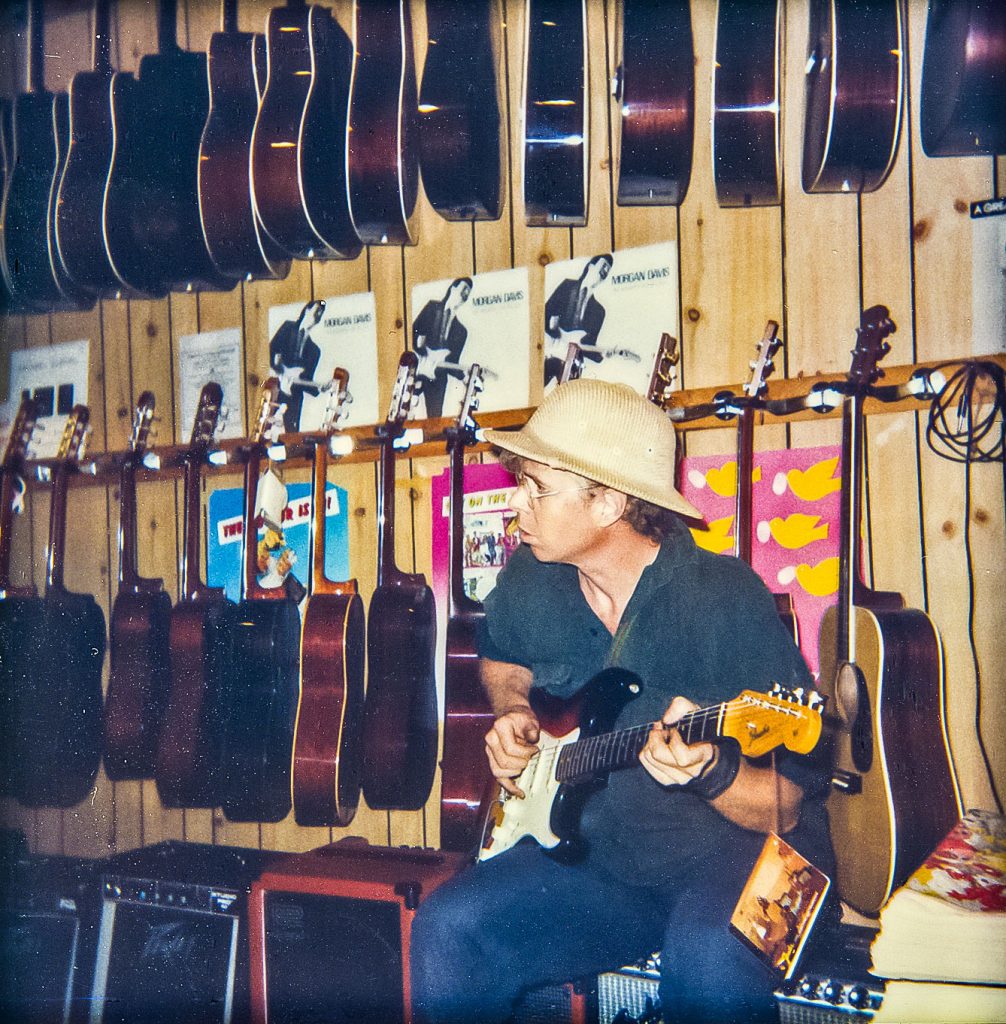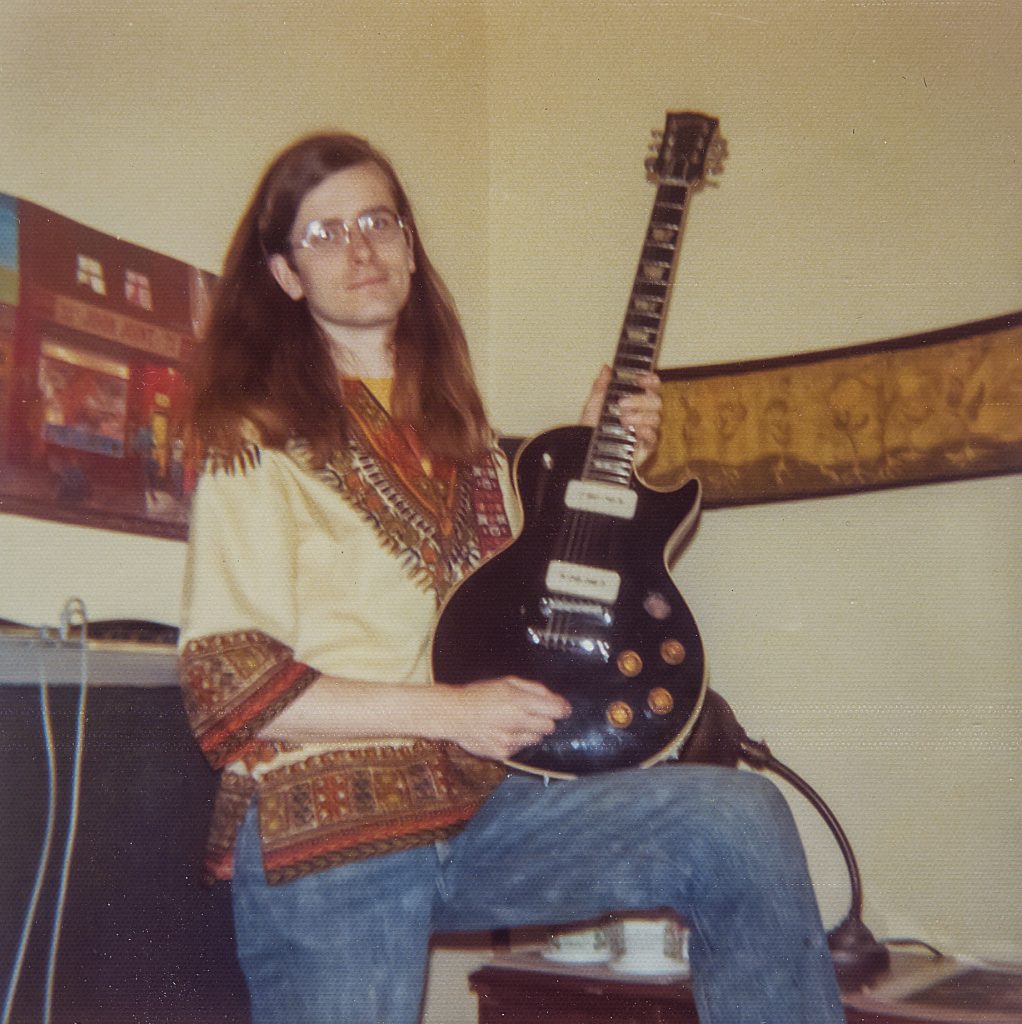A deeper look reveals a storied past

By Nicole Stoffman
Ring Music, the guitar shop at 90 Harbord St., whose customers included Gordon Lightfoot, Bruce Cockburn, and Lenny Breau, has closed after 51 years in business.
Owner John La Roque says he’s “Working away on a new album,” and the now-empty storefront heralds the end of an era. Ring’s closure presents an opportunity to tell its little-known history.
It all started when musician Bill Wager arrived in Toronto from New York in 1969, with a few hundred dollars in his pocket. His new bride insisted he get a real job, so he took a walk down to Queen St. West to ask for work at a printers’ shop, having had experience in that industry.

COURTESY MICHAEL MCLUHAN/RING MUSIC
He saw a guitar in the window of a pawn shop and knew he could sell it for twice the price. Wager had learned a great deal about guitars from Dan Armstrong, the inventor of the world’s first clear plastic electric guitar, and owner of a guitar shop on 48th Avenue in New York.
Wager repaired the instrument and put it in the shop window of Ring Music, an audio store (named after the Lord of the Rings) that his friends had just opened at the southeast corner of Harbord and Spadina.
The guitar sold two days later so Wager, “went cruising pawn shops,” to buy more guitars, fix them up, and sell them at twice the price. Soon he was splitting rent with Ring Audio. A short time later he set up Ring Music in the back of the store, where he also did repairs.

“Then weird things started to happen,” Wager told the Gleaner. “One day I see a nylon string classical guitar. It’s not my expertise, but something said, ‘Buy me.’ I bought it and brought it back to the store. I put it in the window. A few days later, this lovely blonde girl walks in and says, ‘Can I try it?’ I said, ‘Sure!’ I’m surprised the guitar didn’t melt, she was so good. She was fantastic. We were all standing there, our jaws on the floor. It turns out it was Liona Boyd.”
When U of T built the Benson Athletic Centre in 1972, Ring Audio moved to Queen St. West and Ring Music moved to 90 Harbord St. The following year, Michael McLuhan, son of Canadian media guru, Marshall McLuhan, joined Ring to apprentice with Bill Wager and luthier Bruce Dowd. Michael was so good with the customers, that within three months, he was running the front of the store, too. “He never threw any customers out of the store like I did,” explained Wager.
Ring music attracted a professional clientele with its reputation for guitar repair. The Bay City Rollers called Ring to repair their instruments when they were in town. In order to avoid being mobbed by girls in the street, the Rollers asked that their instruments be picked up and dropped off at the hotel. Ring Music provided the same type of pick up and delivery service to Gordon Lightfoot, who reciprocated by wearing his Ring Music T-shirt in public, and being interviewed for Ring’s radio ads, as did Ian & Sylvia Tyson.
The store’s humble facade of recent years does not reveal how much of a storied place it is. Bill Wager and his team once inlaid a diamond into Ian Tyson’s fretboard. Bruce Cockburn once coached a young boy from Grimsby how to play his song “Foxglove,” in the store.
“I remember Bruce Cockburn coming in and trying guitars and the way he’d treat the guitar was like his was giving it a chiropractic treatment,” recalled Nathan Hiltz, an employee from the 2000s.
Other notable customers included Lightfoot’s guitar player, Terry Clements, Mick Taylor of the Rolling Stones, Dave Wilcox, Jim Cuddy, Tom Cochrane, and Lenny Breau, considered to be one of the greatest jazz guitarists of all time.
“He was always penniless,” recalled McLuhan of the Canadian Music Hall of Fame inductee. “Which made it a bit of a problem to service him, because we did have to get paid.”
Penniless or not, working musicians were always welcome at Ring Music.
“You wanted to come to us because we could get you happenin’,” said McLuhan, who purchased the store in 1974. “Everything was on a handshake basis.”
They prided themselves on making used instruments, some of which had been in terrible accidents, road-worthy again.
Ring Music was sold again in 1984, this time to John Laroque. McLuhan had hired Laroque in 1982 to learn repair and to look after customers. LaRoque expanded the business into new guitars and a started a music school.
The store was a haven for former employee Nathan Hiltz, who came to Toronto from Halifax in 2000 as an aspiring young jazz musician. New to the Big Smoke, he found his community by simply crossing paths with other players.
“Ring has always been a very welcoming, helpful place, built around very caring people,” said Hiltz. “Toronto becomes a little less nice, a little less cool, a little less comfortable every time a guitar store closes.”
The mystique of Ring Music was rooted in Bill Wager’s own credentials. In New York, he had played on demos in the Brill Building, which famously housed songwriters and music publishers that wrote some of the greatest American popular music. Songwriters would use the demos to shop songs to artists. Wager played on the demo for “You Keep Me Hanging On,” made famous by the Supremes. He also played bass and guitar on occasion for the Cavalcade of Stars, where he recalls backing nine year old Stevie Wonder.
Ring Music also helped create a market for vintage guitars.
“In 1969 there was no vintage market, there were only used instruments,” said McLuhan. Ring became known for servicing electric guitars, including big jazz arch-top guitars from the forties on up. Arch-tops feature an ‘f-hole,’ similar to that of a violin. They are prized by jazz and blues artists alike for their big, complex sound. “We developed this insane reputation as those instruments started to become revered as vintage instruments.”
Ring music also helped to launch the career of world-renowned luthier Linda Manzer, when they bought her first guitars. Based in Toronto, Manzer now makes guitars for the likes of Paul Simon and Pat Methany. Her creations can be seen in the permanent collections of The Canadian Museum of Civilization and the McMichael Art Gallery.
“Ring was the hub of musical and social activity, and it was always exciting to walk in because you never knew who you were going to see playing a guitar or end up in a lively conversation with,” said Manzer.
At Ring Music, it was more important to resurrect guitars, often with homemade parts, than to restore them with original parts. A case in point was a 1942 Vega Deluxe hand-carved in Boston, with a Maple back and spruce top. One day, the Vega Deluxe came into the shop an accident victim, missing the back and neck, and with a crushed brace. After being revived at Ring Music, it was owned by McLuhan, then LaRoque, and eventually Nathan Hiltz, who wasn’t looking for a guitar at the time.
“People now borrow this guitar from me to do recordings,” says Hiltz. “I didn’t have money to buy a lot of guitars, so it was a big deal for me to buy it, but I was guided very, very well.”
